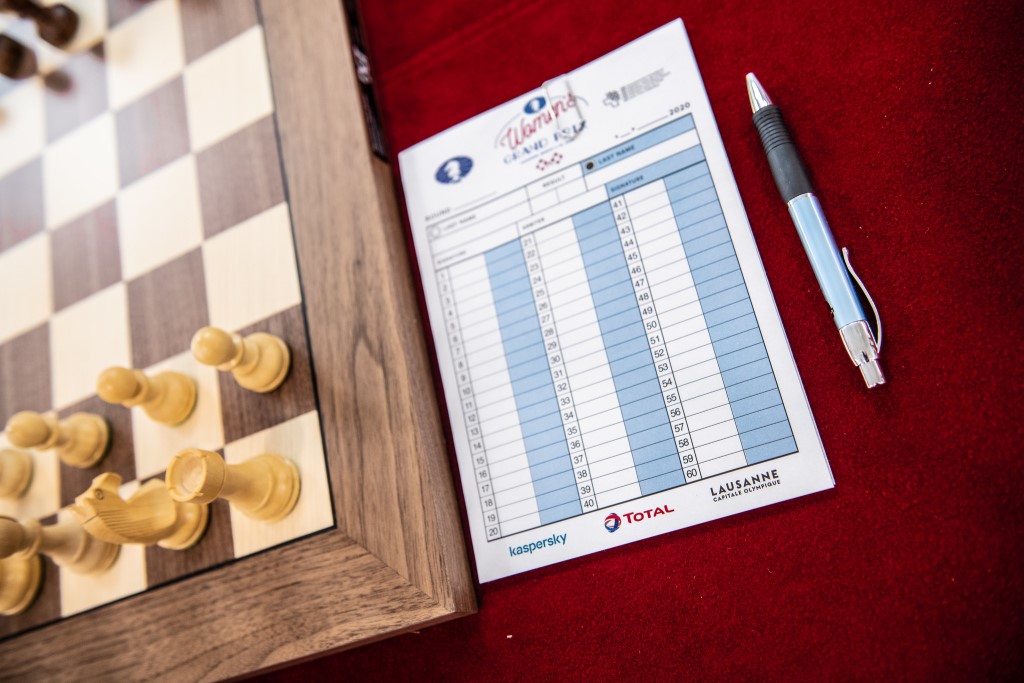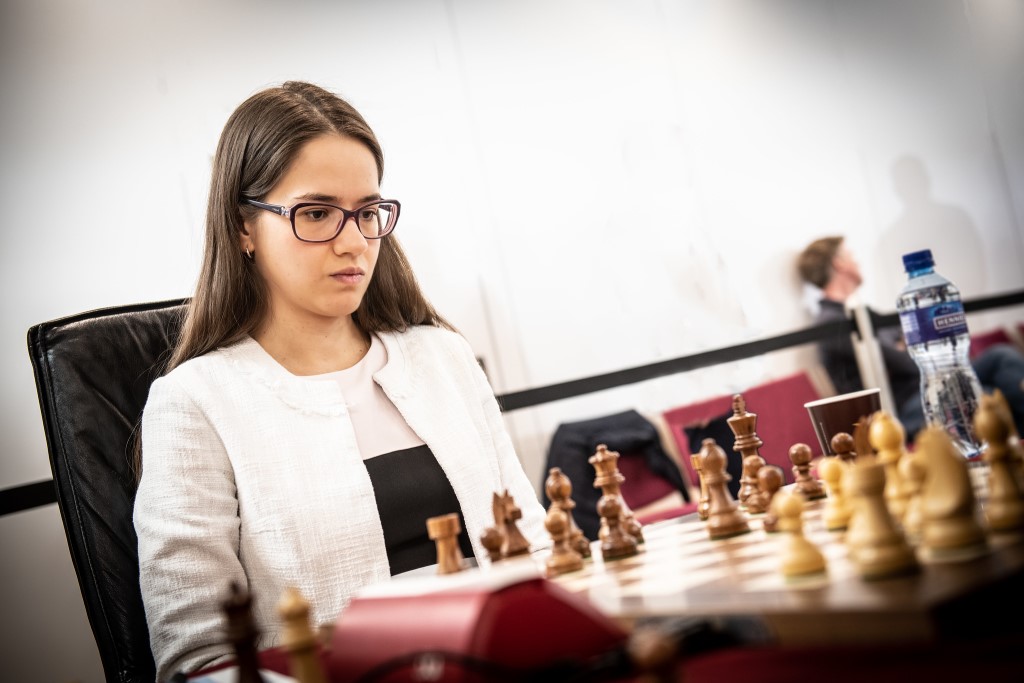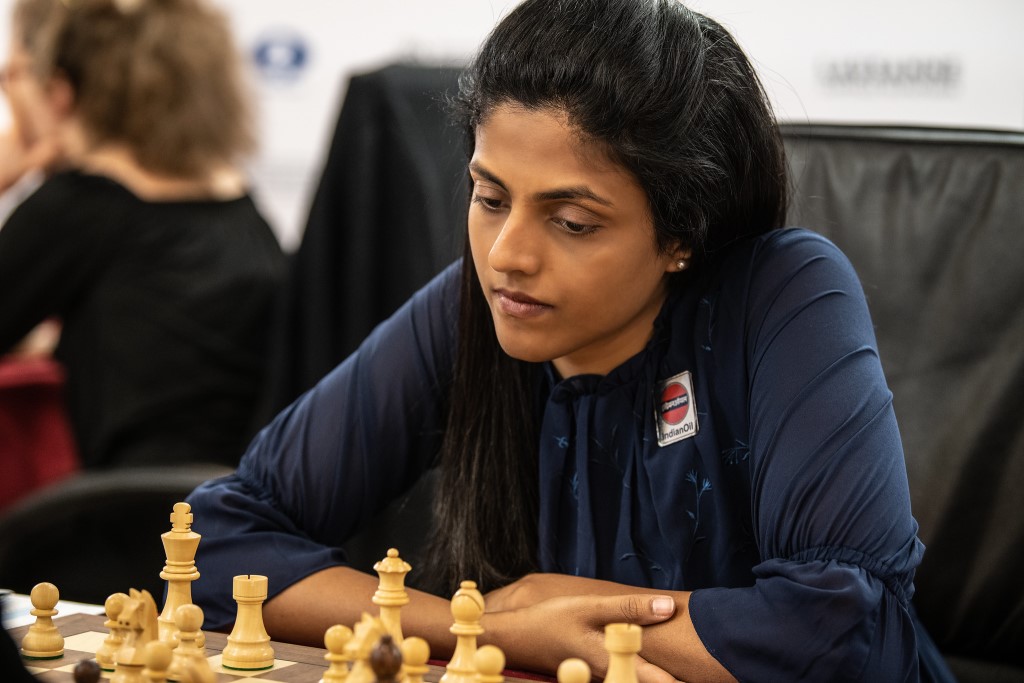


ChessBase 17 - Mega package - Edition 2024
It is the program of choice for anyone who loves the game and wants to know more about it. Start your personal success story with ChessBase and enjoy the game even more.
Three decisive results left five players sharing the lead at the third leg of the Women's Grand Prix series in Lausanne. Nana Dzagnidze and Aleksandra Goryachkina, who already had a 'plus one' score, drew their games with Black and permitted the winners of the day to join them on 2 out of 3 points. While Goryachkina barely played 15 moves of a theoretical Berlin Defence line before signing a draw, Dzagnidze delved into a sharp King's Indian Defence against Antoaneta Stefanova, in which any of three results could have easily been the outcome of a hard-fought battle.
Anna Muzychuk got an advantage as early as move 11 against Marie Sebag and had no issues finishing her opponent off; Alina Kashlinskaya got the better of Alexandra Koteniuk from the black side of a Petroff Defence; and Harika Dronavalli showed great positional understanding to defeat world champion Ju Wenjun after correctly entering a superior bishop endgame.
Ju v Anna Muzychuk and Dzagnidze v Harika are the two encounters between co-leaders of round four.

Everything ready to start the fight | Photo: David Llada
Anna Muzychuk seemed certain to join the winner's circle early on, as she ended up on the better side of a sharp opening battle against Marie Sebag. The line chosen by Sebag had markedly favoured the player with the white pieces in previous instances. Muzychuk was the first one to deviate from theory, choosing a different capture than the one tried by Sasikiran against Harika during last year's Grand Swiss tournament:
My best games in the Sicilian by Alexei Shirov
On this DVD, Shirov focuses on his most outstanding achievements in the Sicilian, a personal selection combining highest chess quality with aesthetic pleasure. His lectures are designed to not only explain the different opening lines, but also to present interesting and sometimes perplexing ideas and sacrifices in the middlegame.
Sasikiran had won the mentioned game after going for 9.♗xd5 here, while Muzychuk's 9.exd5 led to a struggle of a different nature. The game continued 9...b5 10.♗b3 ♞d4 11.d6 ♝xd6 12.♗d5 ♜b5 13.♕h5:
Black was already in trouble, but perhaps Sebag could have put up more resistance with 13...♞e6 here, a more cautious attempt than her 13...♛f6. After the queen move, White could gain tempo after tempo by attacking her rival's pieces — 14.c3 ♝b7 15.♘e4 ♛e7 and then came the move that Sebag might have missed in her calculations, 16.♗g5.
Now Black is totally busted. Sebag tried 16...♞c2+, giving up the queen and eventually getting the bishop pair as — vastly insufficient — compensation. Muzychuk had no problems using her material advantage and got the full point after 38 moves.

Anna Muzychuk is sharing the lead after beating Marie Sebag | Photo: David Llada
For a second day in a row, Alexandra Kosteniuk lost against a younger compatriot. Last month during the Cairns Cup, the former world champion mentioned repeatedly that she was not very happy with the instability of her results, clarifying that in emotional terms it is better to, for example, win two games and lose one during a tournament instead of winning five and losing four. She demonstrated in Saint Louis, nonetheless, that she can line up victories when needed. We can only wait and see how she reacts to these two losses in Switzerland.
Alina Kashlinskaya put forth a Petroff Defence, and it was actually Kosteniuk who showed better preparation, blitzing out her first 18 moves while Kashlinskaya had already invested 15+ minutes on three occasions in the meantime. It was time well spent though, as the 26-year-old got a strong grip of the position.
The Petroff (or Russian) Defence which is characterised by the moves 1.e4 e5 2.Nf3 Nf6 has been popular at the highest levels for many years and enjoys the reputation of being an extremely solid defence.
Black has the better minor piece and a safer king, with the knight on h4 and the queen on d5 exerting constant pressure over the f3-weakness. Here Kashlinskaya correctly sensed that it was time to open up more lines for her queen and gave up a pawn with 37...b6 38.♗xb6 ♛b5, when the double attack can be countered with 39.♖g1 (in case of 39...♛xb6, 40.♕xh4 improves White's situation). Black had succeeded in creating more paths to increase the pressure though.
Although she could not win with a direct attack, Kashlinskaya eventually managed to simplify into a winning pawn endgame.

Alina Kashlinskaya | Photo: David Llada
In the meantime, Harika Dronavalli was facing world champion Ju Wenjun in a heavily strategical battle. In a position with queens, dark-squared bishops and seven pawns per side, Ju's decision to offer a queen swap was by no means forced:
Rocket Repertoire: The Four Knights
Like a fine wine, the Four Knights only improves with age, establishing itself as an extremely effective way of meeting 1...e5. On the outside this opening seems deceptively quiet, yet apparently natural moves can often lead to some devastating attacks.
White has a small edge with her pawns fixed on light squares, so it is hard to suggest anything for Black other than simply sitting tight in defence. Ju here went for 25...♛d2, perhaps considering that she had enough resources to hold the slightly inferior position in an ending. Harika confidently accepted the offer and began to show marvellous technique from this point on.
Replaying how the Indian star converted her advantage is of great instructional value.

Harika Dronavalli | Photo: David Llada